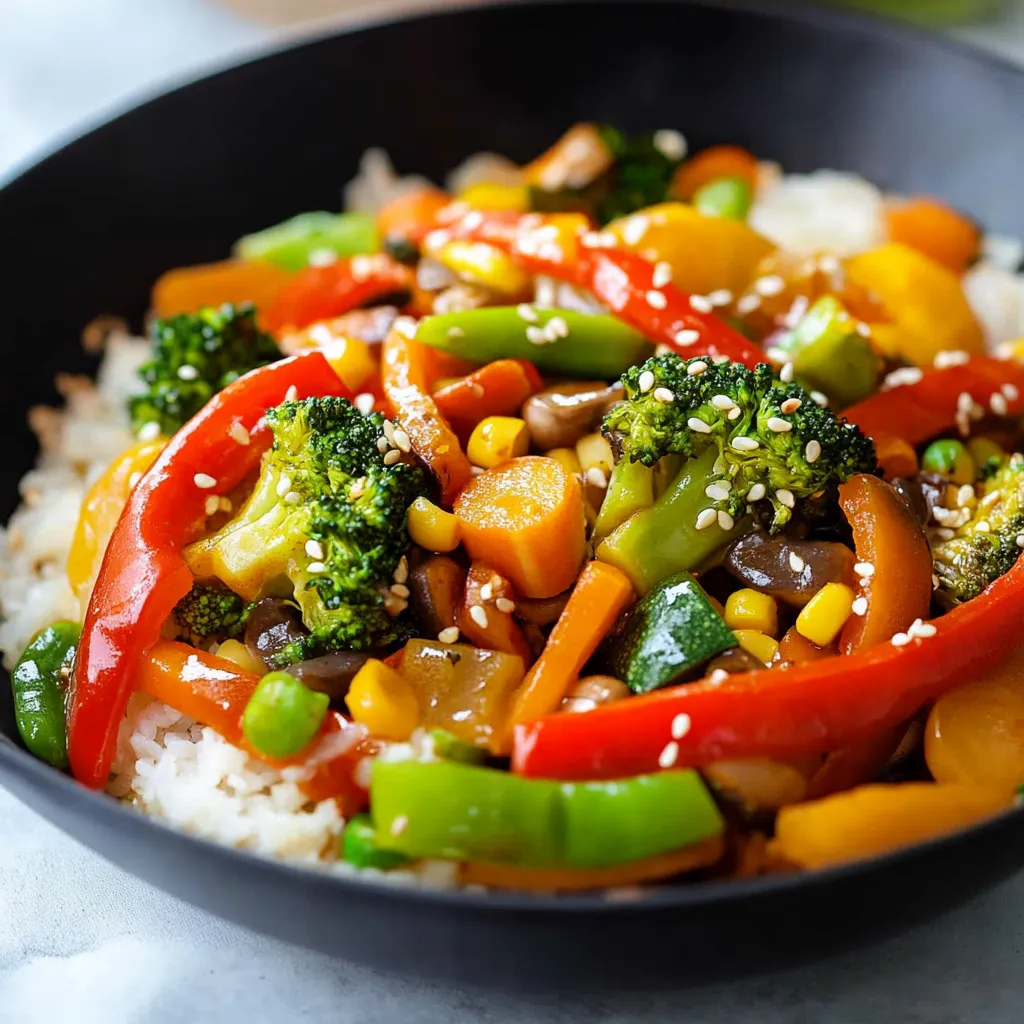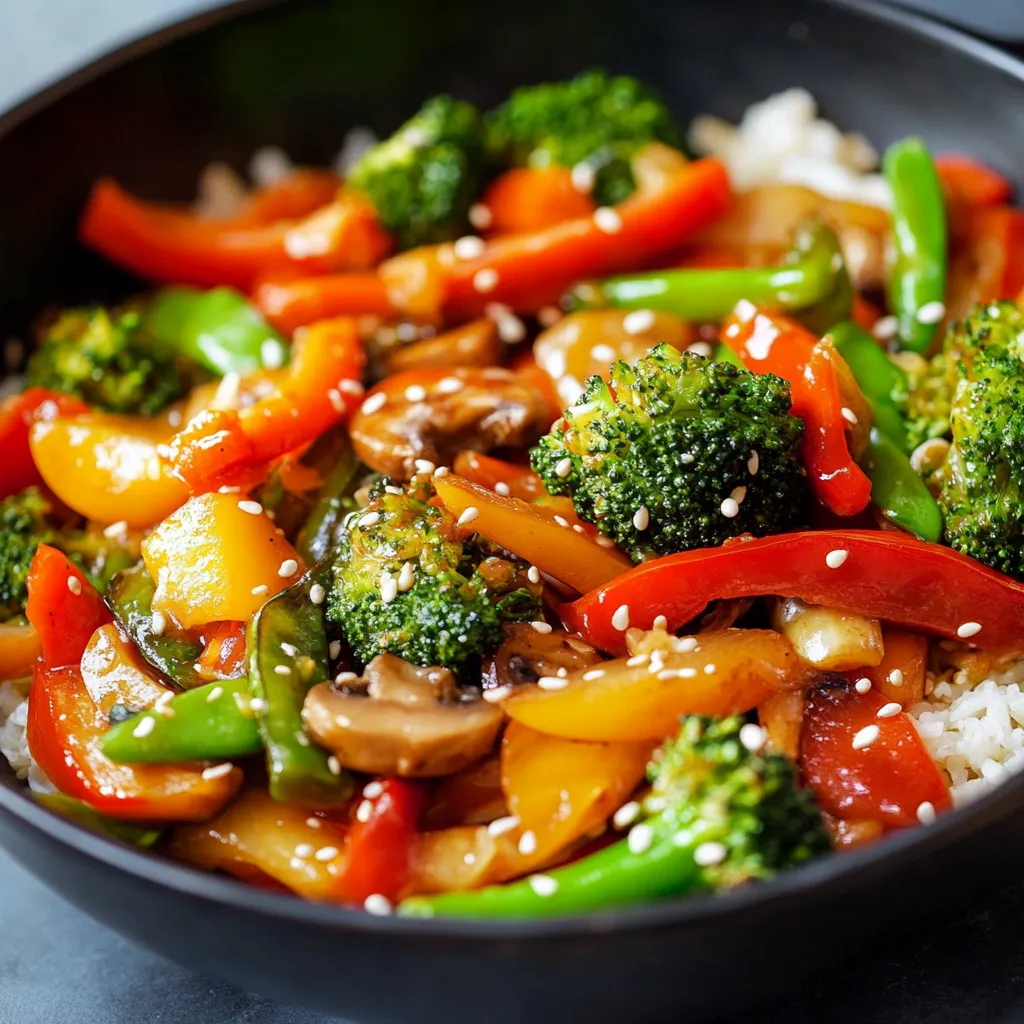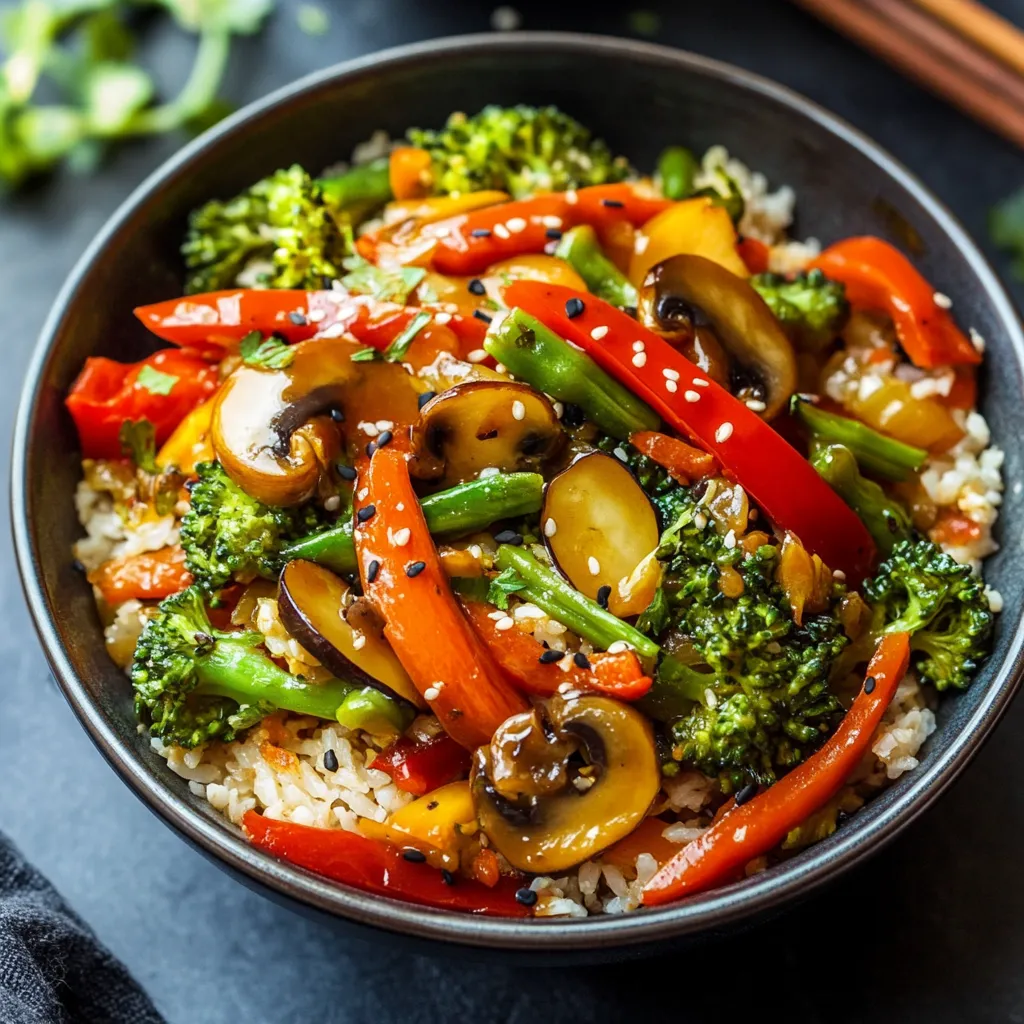 Save
Save
Turn everyday veggies into a colorful, flavor-packed stir-fry better than anything you'd order in. This adaptable meal pairs crunchy vegetables with a savory, scratch-made sauce that wraps around every bite just right.
I've played with tons of stir-fry methods over the years and finally figured out that getting the timing and sauce thickness just right changes everything. This has become what my family asks for whenever we're short on time.
Key Ingredients Breakdown:
- Vegetables: Pick crisp, bright ones
- Soy Sauce: Go for reduced-salt for better taste
- Ginger: Always use the real root, not jarred stuff
- Garlic: Fresh cloves you mince yourself
- Oil: Something that won't smoke easily like peanut or canola
- Sesame Oil: Only use the dark toasted kind
- Cornstarch: Can't skip this for thickening
Cooking Walkthrough:
- Making Your Sauce:
- Mix soy sauce, sesame oil, fresh minced garlic, grated ginger, and brown sugar in a bowl. Stir cornstarch with cold water until it's smooth, then add to your sauce mix. Put aside.
- Getting Veggies Ready:
- Cut everything roughly the same size so they cook evenly. Group them by how long they take: tough ones (carrots, broccoli), middle ones (mushrooms, bell peppers), quick ones (snow peas).
- First Cooking Step:
- Get a big wok or pan really hot. Add your oil and wait till it shimmers. Start with the tough veggies like carrots and broccoli first.
- Second Cooking Step:
- After 2-3 minutes, toss in your middle group veggies. Keep everything moving all the time. You should hear a sizzle when stuff hits the pan.
- Last Cooking Step:
- Throw in your quick-cooking veggies. Keep stir-frying until everything's tender but still has some bite, around 5-6 minutes total.
- Finishing With Sauce:
- Pour your sauce around the sides of the pan so it runs down. Quickly toss everything to coat. Cook until your sauce gets shiny and thick.

Great stir-fry comes down to getting ready ahead of time. My grandma always told me to set up my veggies like I'm getting ready to paint a picture.
Managing Your Wok Heat
Keeping the right heat makes sure your veggies cook fast but stay crisp. Don't pour cold sauce into a super hot pan - it should just barely bubble when you add it. Cook veggies with high heat, then drop to medium-high when thickening the sauce.
Getting Sauce Just Right
Let your sauce bubble gently while stirring it non-stop until it sticks to the back of your spoon. It should look shiny and be thick enough to stick to your veggies without getting gummy.
Keeping Leftovers Fresh
Store what's left in a sealed container for up to 3 days. Warm it up fast in a hot wok to keep things crunchy. Don't try freezing or you'll end up with soggy veggies.
Ways To Enjoy It
Put it on top of rice or noodles. Add some tofu, shrimp or chicken to make it a full meal. Sprinkle with sesame seeds and green onions before serving.

This has turned into my go-to way to use whatever veggies are in season. The flexible sauce and cooking method can turn any mix of vegetables into something amazing that beats takeout any day of the week.
Recipe Q&A
- → Can frozen veggies be used?
- Totally fine! Just defrost and pat dry to avoid sogginess.
- → Is the sauce gluten-friendly?
- Swap out soy sauce for tamari to keep it gluten-free.
- → Can I prep the veggies early?
- Slice and store them in containers up to two days ahead.
- → Any protein suggestions?
- You can toss in shrimp, chicken, tofu, or beef. Cook the protein first and set aside.
- → What about storing leftovers?
- Keep in the fridge for three days max. Reheat quickly in a wok to keep that crunch.
